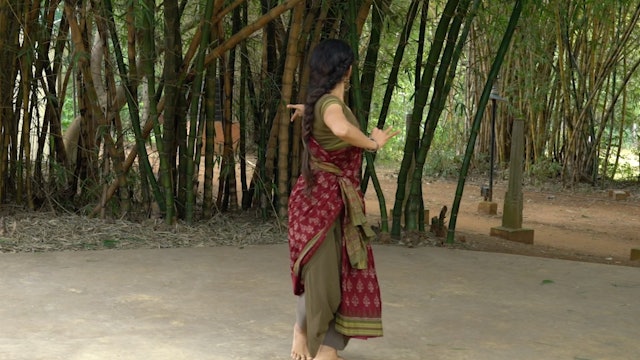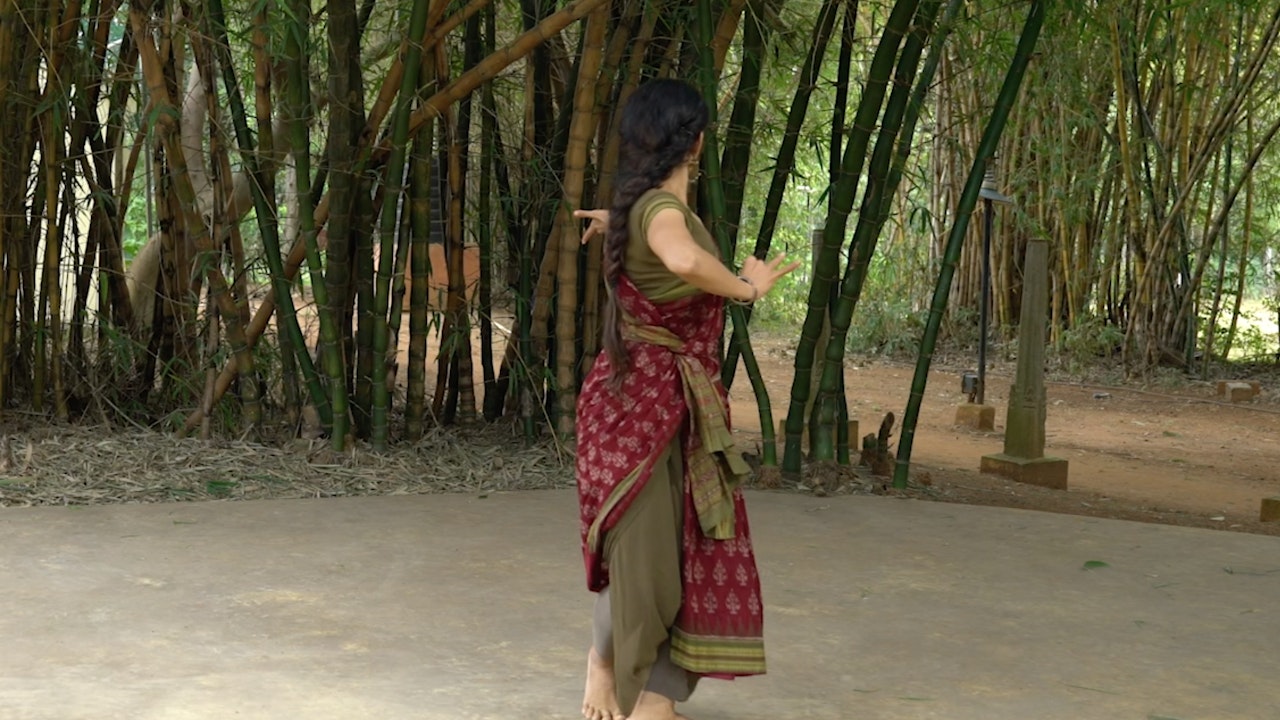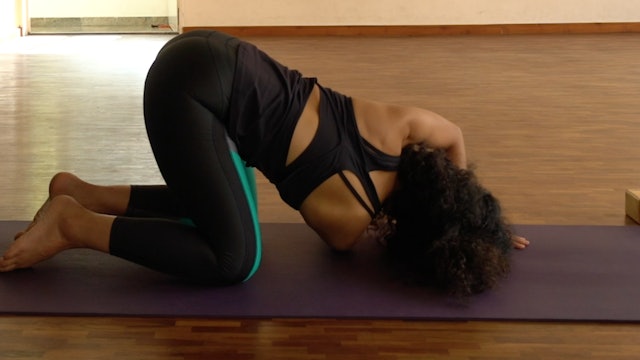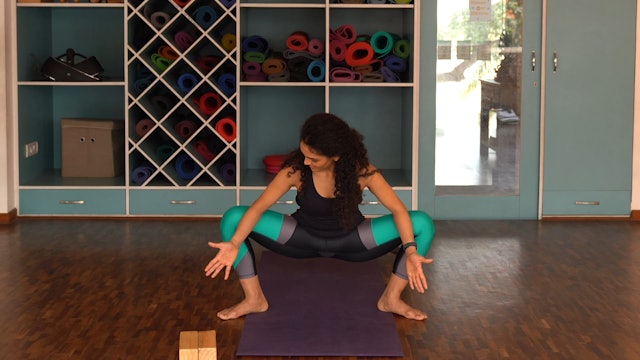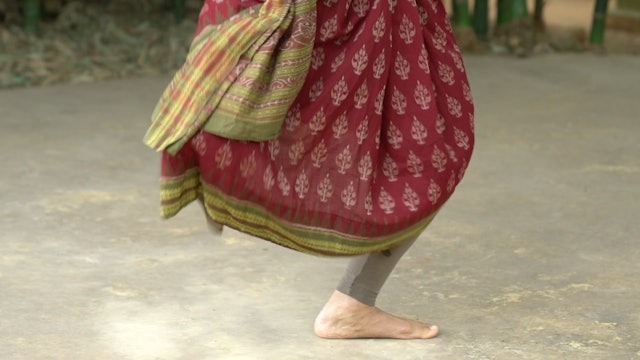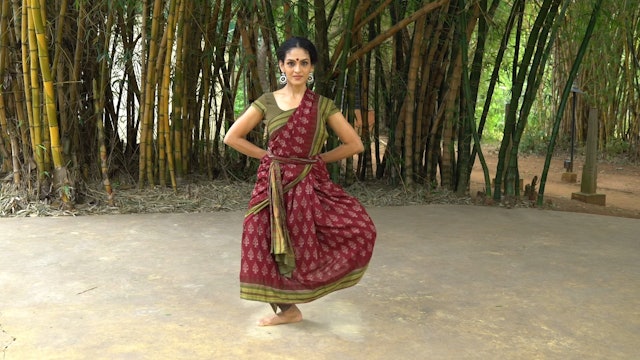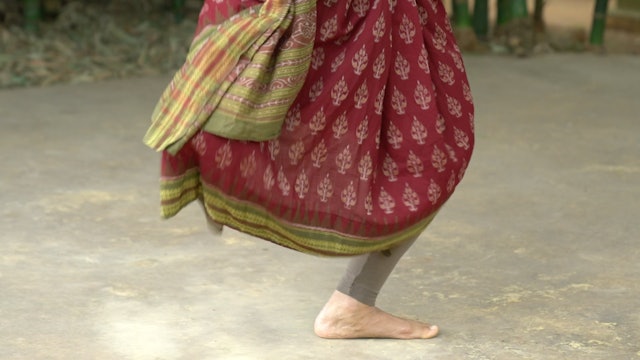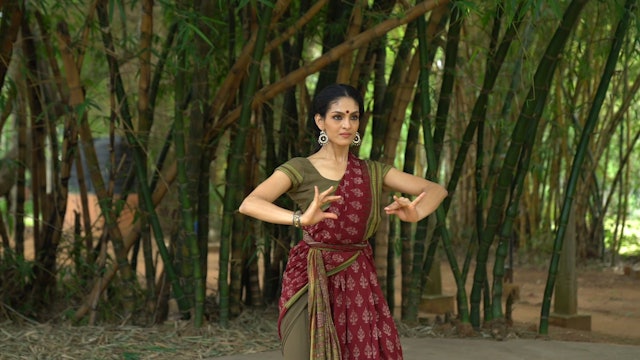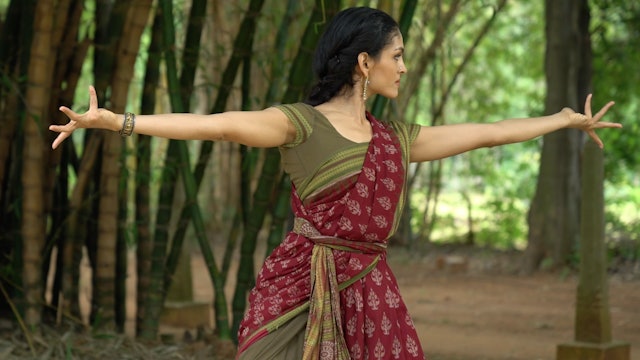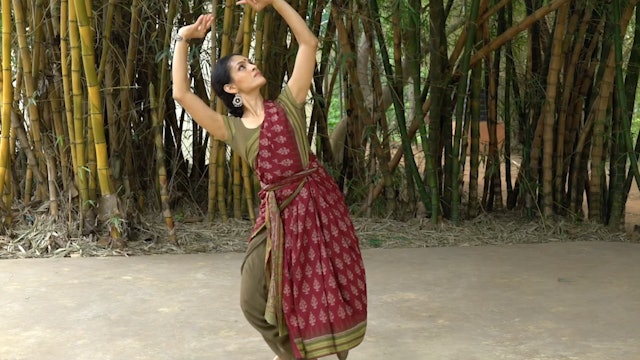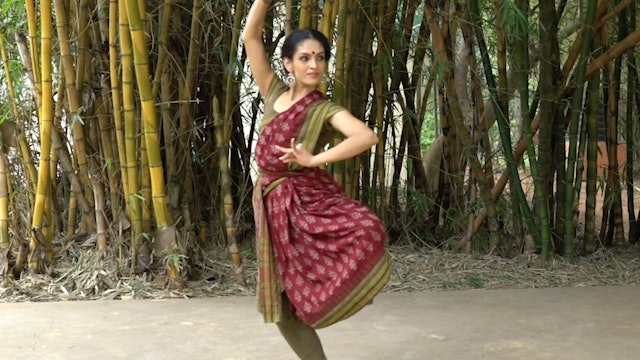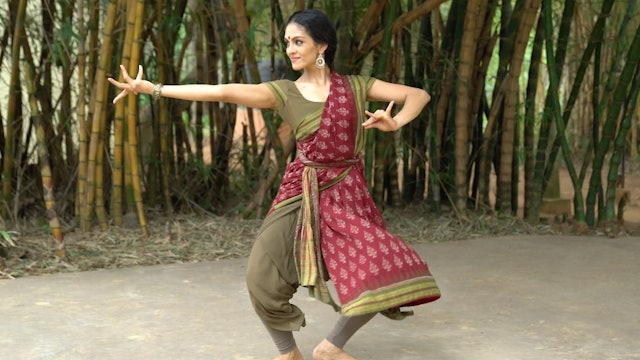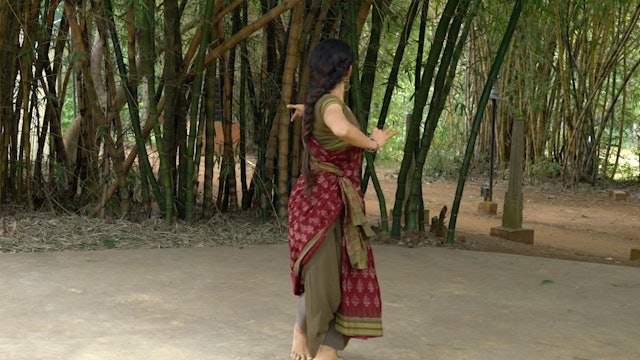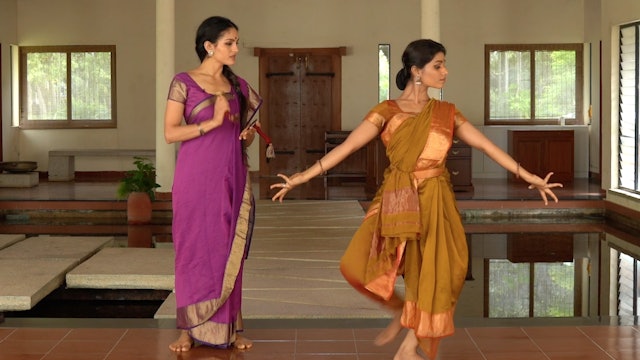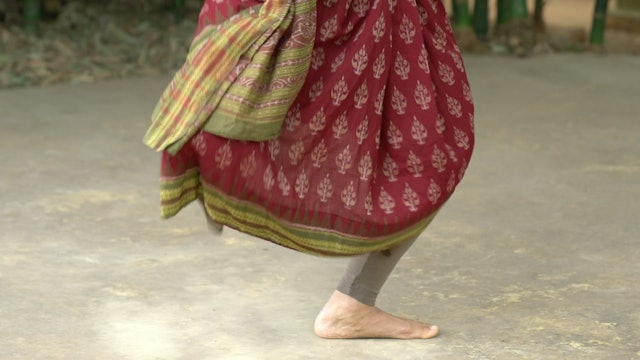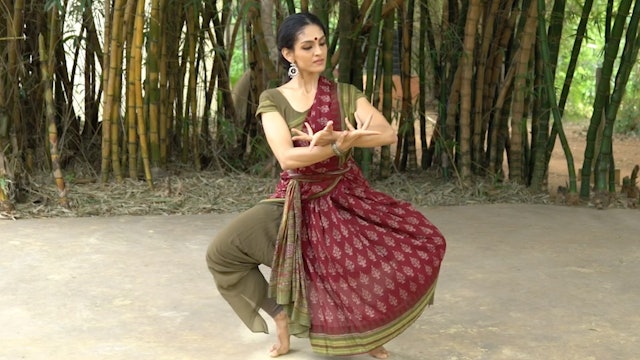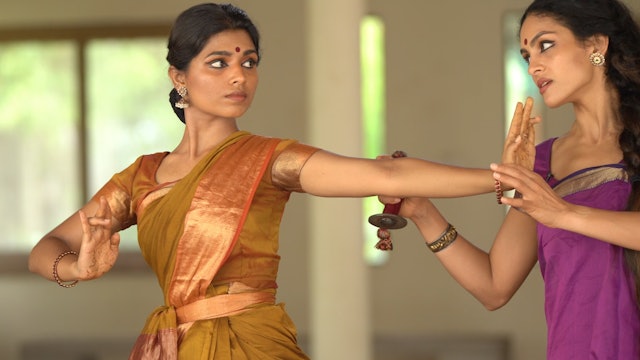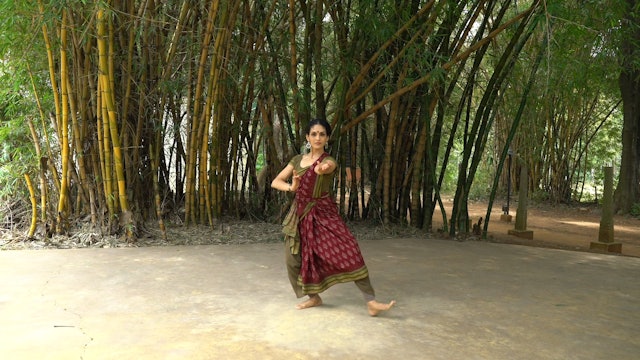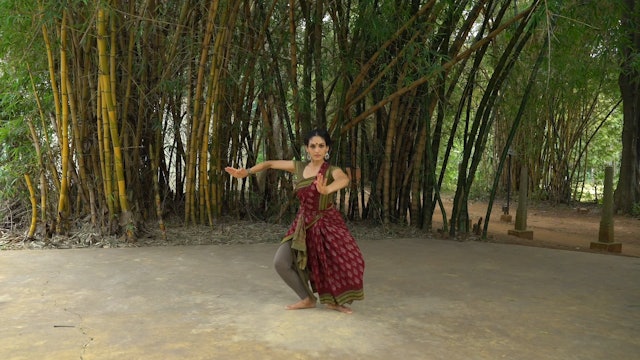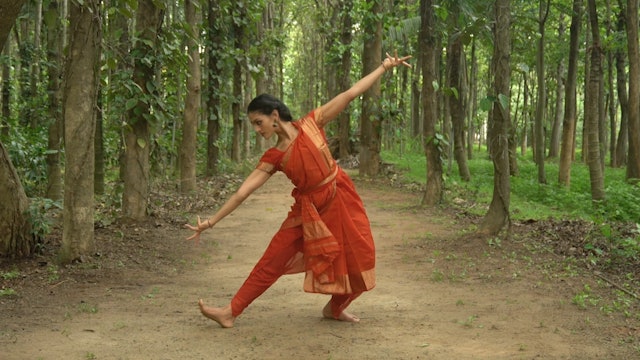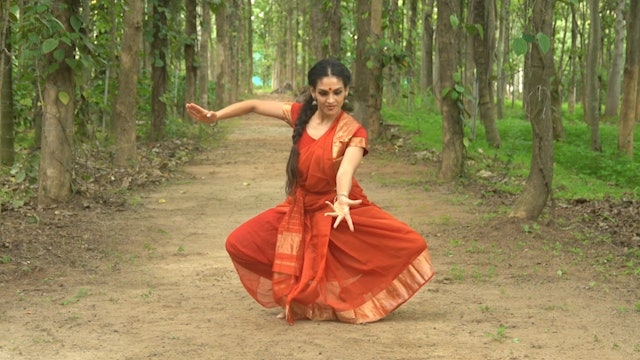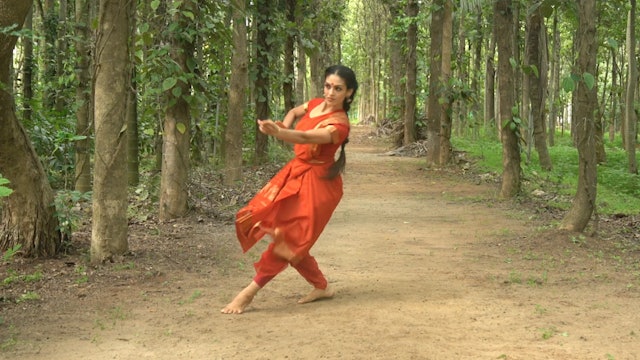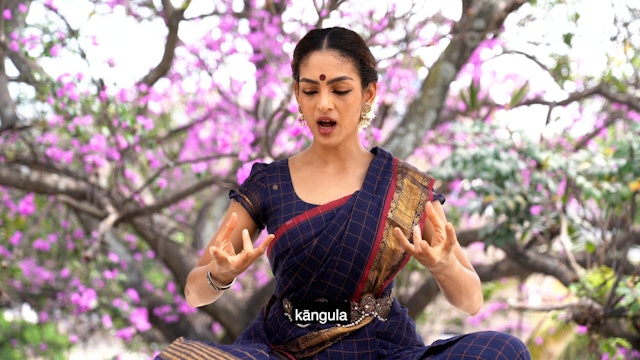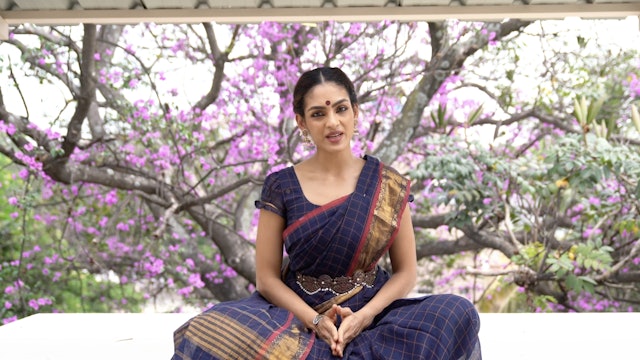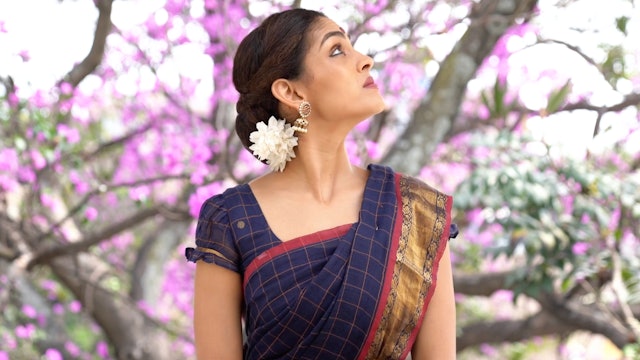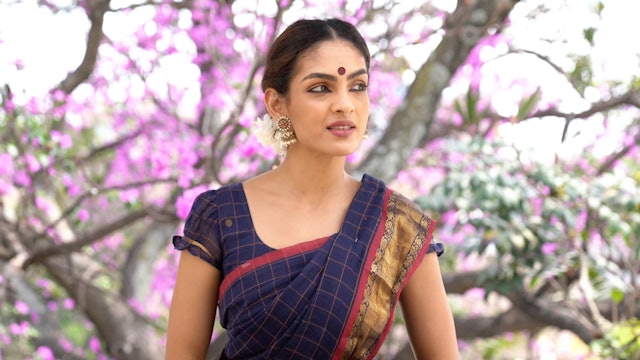-
General mobility
This is a great session to do on a day when you feel tight or sore. It opens up your body without expecting too much of it. You can also do it before you start a warm-up or after a strength or dance session. It is a session that is safe to practice early in the morning.
-
Hip Openers
This series can be practiced after a basic warm up, before beginning an Adavu practice.
The hip opener series will help you navigate through tight hips. It will help you mobilise your hips and enable you to push your thighs back while sitting in Araimandi. Please do this in combination with str...
-
Thattadavu 1
The Thattadavu introduces concepts of rhythm to the beginner student through various patters of striking the floor with the foot. Do these in sequence to progressively build clarity in the articulation of the foot with the floor. Keep your hips stable and try not to move from side to side. It is ...
-
Thattadavu 5
The Thattadavu introduces concepts of rhythm to the beginner student through various patters of striking the floor with the foot. Do these in sequence to progressively build clarity in the articulation of the foot with the floor. Keep your hips stable and try not to move from side to side. It is ...
-
Thattadavu 7
The Thattadavu introduces concepts of rhythm to the beginner student through various patters of striking the floor with the foot. Do these in sequence to progressively build clarity in the articulation of the foot with the floor. Keep your hips stable and try not to move from side to side. It is ...
-
Pakkadavu 1
Pointers for Pakkadavu 1:
Watch the level of your arms. Make sure you maintain the length of your neck. Turn to the side with your head straight, without tilting. Keep your eyeballs in the centre of your eyes. When you reach to the side, do not raise the opposite elbow. maintain length.
The ...
-
Pakkadavu 2
Pointers for Pakkadavu 2:
Keep your shoulders down when stretching your arms.
Keep the height of the arm that you are looking away from. It is common to let this arm go too far back or let it drop below shoulder height.
Keep your head straight when you look to the side.
Make sure you keep you... -
Pakkadavu 3
Pointers for Pakkadavu 3:
Keep your shoulders down when lifting your arms.
Make sure your arms do not go too far back.
Follow your arm and keep your gaze toward the wrist of the arm you are bending away from.
Make sure you keep your thighs pushing back while retaining Swastikam in your feet.
... -
Pakkadavu 4
Pointers for Pakkadavu 4:
- Keep your shoulders down when lifting your arm.
- Make sure your arm in front of your chest doesn't cross the centre of your chest.
- Make sure you do not sit in your hip when lifting one leg. Keep the thigh pushing back on the standing leg
- do not rest your raised ... -
Paraval Adavu 1
Paraval literally means to spread. Some schools of thought also call the Paraval adavu, the 'Pakkadavu' as it moves to the side while sliding. Some others change the name based on the way the foot articulates with the floor. A few of the types of Paraval, can be referred to as Marditam adavau, as...
-
Paraval Adavu 2
Paraval literally means to spread. Some schools of thought also call the Paraval adavu, the 'Pakkadavu' as it moves to the side while sliding. Some others change the name based on the way the foot articulates with the floor. A few of the types of Paraval, can be referred to as Marditam adavau, as...
-
Paraval adavu
The Paraval adavu moves to the side, like the Pakkadavu, but the srea covered is expansive. The articulation of the feet changes. There are many varieties in this adavu. Although Paraval serves as an umbrella classification, sometimes we call the adavus by varied names based on how the feet inter...
-
Parval Adavu 3
Paraval literally means to spread. Some schools of thought also call the Paraval adavu, the 'Pakkadavu' as it moves to the side while sliding. Some others change the name based on the way the foot articulates with the floor. A few of the types of Paraval, can be referred to as Marditam adavau, as...
-
Kuditta Mettaduvu
Pointers for Kuditta Mettadavu:
Try to go down instead of hopping up each time you snatch onto your heels.
Keep dropping your tailbone and pushing your thighs back.
When you bend to the side, try not to have any form of a forward bend.By the time you progress to the Kuditta mettadavu, your l...
-
Theermana adavu/ Makutadavu
Theermana, or Makuta literally refers to something that ends a sequence. These adavus are placed at the end of a Korwai or Jathi to complete it. They are done in a variety of talas and even the torso moves differently in the many varieties. We will deal with two primary varieties of this Adavu th...
-
Teermana Adavu 1
The Theermana or Makutadavu, is placed at the end of a Korwe or Jathi in specific rhythmic patterns, to create an ending.
The leg is either placed outstretched directly in front or at a diagonal of 45 degrees. The foot is flexed and the heel strikes the floor. In the Raadha Kalpa method we begi...
-
Theermana Adavu 1, variation
The Theermana or Makutadavu, is placed at the end of a Korwe or Jathi in specific rhythmic patterns, to create an ending.
The leg is either placed outstretched directly in front or at a diagonal of 45 degrees. The foot is flexed and the heel strikes the floor. In the Raadha Kalpa method we begi...
-
Adi Tala Korwe 1
Please watch the first three lectures on Talam before beginning the Korwe series. There is an instruction video for each Korwe.
A Korwe is a set of adavus that are formatted to a specific rhythmic structure, ending with a Muktayam/Teermanam adavu and layered on a Swara like in a Jatiswaram or Ta...
-
Sarvalaghu Jathi 1
This Jathi has an instructional video. The counts for all the Sarvalaghu Jathis are all in 4 counts. Please watch and try to learn the Jathi for practice.
Please keep in mind that the Raadha Kalpa method likes to reinforce the idea of neutrality in Nritta patterns that are not placed within a c...
-
Sarvalaghu Jathi 2
This Jathi does not have an instructional video. The counts for all the Sarvalaghu Jathis are all in 4 counts primarily. There are small variations in this particular Jathi. Please watch the Tala Theory video after you learn the Jathi and try to analyse where the variations occur.
Please keep ...
-
Asamyukta Hasta
The Asamyuta hastas, as described in the Abhinaya Darpana are 28 in number.
These Hastas are used as embellishments in adavus as well as to communicate meaning gesturally, The Viniyogas in the Abhinaya Darpana describe a number of possible gestural implications for each Hasta.
Please refer to...
-
Samyukta Hasta
The Asamyuta hastas, as described in the Abhinaya Darpana are 28 in number.
These Hastas are used primarily communicate meaning gesturally, The Viniyogas in the Abhinaya Darpana describe a number of possible gestural implications for each Hasta.
Please refer to the Shloka below for pronunciat...
-
Shirobheda Abhinayadarpanam
The Shirobhedas, as described in the Abhinaya Darpana are 9 in number.
These Shirobhedas, or gestures of the head are used primarily communicate meaning gesturally, and also used for specificity in Nritta.Please refer to the Shloka below for pronunciation. Please note that the separate movement...
-
Grīvabheda Abhinayadarpanam
The Grīvabhedas, as described in the Abhinaya Darpana are 4 in number.
These Grīvabhedas, or gestures of the neck are used primarily communicate meaning gesturally, and also used for specificity in Nritta.Please refer to the Shloka below for pronunciation. Please note that the separate movement...
